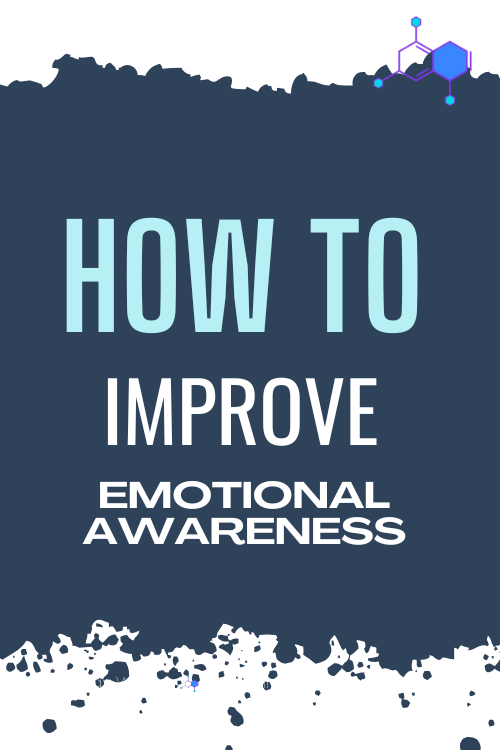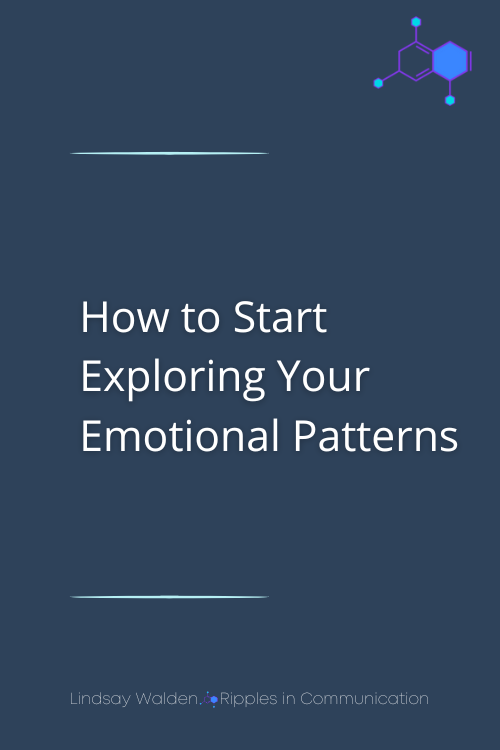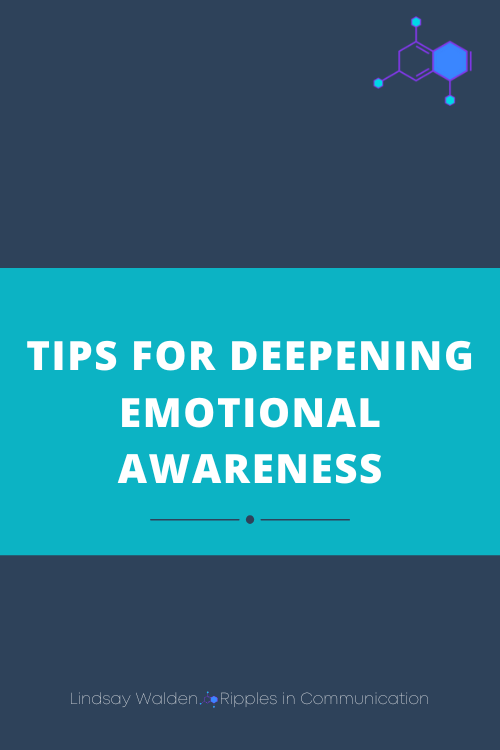How to Understand and Manage Your Emotions
Have you ever felt like your emotions are running the show—making you snap at someone you love, shut down in a hard conversation, or spiral into anxiety you can’t explain?
You’re not alone.
So many of us were never taught how to actually understand our emotions, much less manage them in a healthy way. We might hear advice like “Just calm down,” or “Don’t let it get to you,” but no one explains how.
The truth is, your emotions aren’t bad. They’re not the enemy.
They’re messengers.
And when you learn to listen to them—without letting them control you—you gain one of the most important skills for mental health, relationships, and real self-growth.
In this post, you’ll learn:
Why emotional awareness matters (with real, brain-based science behind it)
How to explore your emotional patterns in a safe, structured way
Simple prompts and strategies you can use right now to respond more thoughtfully and calmly
This is the work I do every day with clients in Cognitive Neuro Therapy. Because if you can understand your emotions, you can change your life.
Don’t forget your FREE CNT TOOLKIT SAMPLER!
Have you grabbed your FREE CNT Toolkit Sampler yet? It’s packed with science-backed tools designed to help you regulate emotions, manage stress, and develop deep self-awareness. If you’ve ever felt overwhelmed by your reactions or stuck in negative thought patterns, this toolkit will give you the proven strategies I use with clients to help them strengthen emotional neutrality, rewire unhelpful responses, and build lasting resilience. Inside, you’ll find practical exercises and guided reflections to help you navigate challenges with clarity and confidence. Enter your email below, and I’ll send it straight to your inbox!
Why Emotional Awareness Actually Matters
If you’ve ever found yourself saying “I just react without thinking!” or “I don’t even know why I feel this way,” you’re describing a very real, very human experience.
Here’s why it happens.
When you’re triggered—by a stressful event, a fight with your partner, a tough memory—your brain’s emotional center (the limbic system) lights up fast.
It’s designed to protect you. Fight, flight, freeze.
But that speed means you often respond on autopilot, with anger, fear, or shutting down—without thinking clearly about what you really want or need.
Emotional awareness is the skill that slows everything down.
When you notice what you’re feeling and why, you activate your prefrontal cortex (your brain’s thinking, reasoning part).
This shift gives you the power to choose your response instead of just reacting.
It also helps you communicate more clearly with others.
And it gives you a chance to learn from your emotional experiences, rather than repeat old patterns.
So emotional awareness isn’t just “nice to have.” It’s essential for:
Managing stress and anxiety
Improving relationships
Healing from trauma
Building resilience and self-understanding
The Neuroscience of Emotional Awareness (in Simple Terms)
One of the things my clients appreciate most is that we don’t just talk about feelings in the abstract.
We look at what’s actually happening in the brain.
Here’s the simplest way to understand it:
When you pause to name what you’re feeling—“I feel angry,” “I feel hurt,” “I feel worried”—you move activity from the reactive limbic system into the reasoning prefrontal cortex.
This isn’t just a theory. It’s backed by brain imaging studies that show labeling emotions actually reduces emotional intensity.
So by acknowledging what you feel, you’re not “wallowing” in it. You’re giving yourself a way to process it and move through it.
That’s why this work is so powerful.
It’s not about ignoring your emotions. It’s about understanding them so you can choose your response.
How to Start Exploring Your Emotional Patterns
If this feels new or intimidating—don’t worry.
Emotional awareness is a skill you can learn.
In my practice, I use something called the CNT Self-Discovery Puzzle—a framework that breaks self-understanding into manageable, targeted areas. One of the most important is the Emotions & Reactions section.
Here’s how you can start working through it yourself:
Step 1: Reflect on Emotional Strengths
Most of us focus on where we struggle with emotions, but recognizing your strengths is just as important.
Prompt: Write about a time you handled stress well. What helped you succeed?
This question isn’t fluff. It helps you uncover resources you already have—so you can use them more intentionally.
Step 2: Explore Joyful Moments
Emotional awareness isn’t only about managing hard feelings.
It’s also about understanding what brings you happiness and how to create more of it.
Prompt: Think of a time you felt pure joy. What brought it on? How can you invite more of those moments into your life?
This might feel simple, but knowing what lights you up is crucial for mental health.
Step 3: Identify Areas for Growth
Of course, it also helps to be honest about the emotions you find harder to manage.
Prompt: Identify one emotion you struggle to handle well. What might help you improve?
Here, you’re not beating yourself up. You’re getting curious about what supports you need to handle that emotion differently next time.
Real-Life Example: Amanda’s Breakthrough
Let me share a real (but anonymized) client scenario.
Amanda often felt overwhelmed and defensive in team meetings. She’d leave frustrated and worried about how she came across.
We worked together to uncover her emotional triggers. She realized it wasn’t the meeting itself, but feeling unprepared that spiked her anxiety.
She began using the CNT Emotional Neutrality Checklist (inside the CNT Toolkit Sampler) before meetings, reviewing what she wanted to say, calming her breathing, and acknowledging her worry without judgment.
The result?
✅ She went into meetings calmer and more focused.
✅ She felt confident speaking up.
✅ Her team relationships improved.
This is what emotional awareness can do. It gives you back control—without forcing you to suppress or ignore what you feel.
Tips for Deepening Emotional Awareness
Here’s the truth: emotional awareness isn’t something you do once and forget about.
It’s an ongoing practice.
But it doesn’t have to be complicated.
Below are a few simple strategies you can use anytime:
#1 Practice Mindfulness
Check in with your emotions regularly.
Take 30 seconds to pause and ask:
“What am I feeling right now?”
Observe without judgment. There’s no need to “fix” it immediately. Just notice.
#2 Use Emotional Labels
This is the science-backed part.
Name what you’re feeling.
Instead of a vague “I’m upset,” try:
“I feel anxious because I’m worried about meeting expectations.”
“I feel angry because I don’t feel heard.”
This clarity lowers intensity and helps you respond thoughtfully.
#3 Reflect on Emotional Triggers
Our reactions often come from predictable patterns.
Prompt: What situations tend to trigger strong emotions for me? How might I approach them differently next time?
Writing this down can help you see connections you’ve missed—and plan ahead for calmer responses.
Benefits of Doing This Work
Why bother with all this?
Because emotional awareness changes everything.
When you can recognize and name what you’re feeling, you gain:
Greater Self-Control Instead of reacting impulsively, you choose your response.
Deeper Relationships You communicate more clearly and empathetically with others.
Improved Well-Being Processing emotions reduces stress and mental clutter.
This isn’t about perfection. It’s about progress.
Every moment you spend understanding your emotions is a moment you’re investing in yourself.
Conclusion: Take the Next Step Toward Emotional Mastery
Here’s the thing about emotions: you’ll never stop having them.
But you can stop letting them run your life.
Emotional awareness is a skill you can practice and strengthen over time.
If you’re ready to get started, the Emotions & Reactions section of the CNT Self-Discovery Puzzle (included in the CNT Toolkit Sampler) gives you structured, practical prompts to explore your patterns in depth.
It’s designed to help you move from reactive to responsive—from overwhelmed to clear and calm.
You can download the CNT Toolkit Sampler today and start exploring your emotional patterns with confidence.
Ready to go even deeper?
You can also book a free 15-minute call with me to see if private Cognitive Neuro Therapy sessions are right for you. Together, we’ll get to the root of what’s really going on—and help you build the emotional mastery you deserve.







